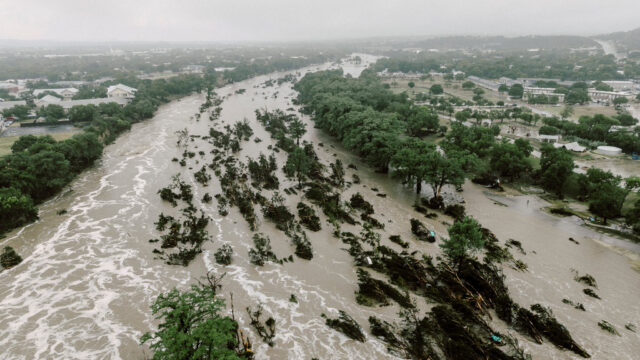When Hunga Tonga Met Texas

The Texas Hill Country flood may have packed a bigger punch from the Hunga Tonga volcanic eruption of 2022.
The extraordinary flash flooding that struck the Texas Hill Country this Fourth of July weekend has seized the nation’s attention. The disaster struck close to home, as multiple family friends have daughters who were at Camp Mystic—located on the bank of the Guadalupe—who are dead or missing. I can scarcely imagine the anguish felt by the parents of the still missing children, or the relief felt by the parents of these two girls.

As has been understood for over a century, the limestone and granite hills of Central Texas are riddled with tens of thousands of drainages that fill up and run into rivers such as the Guadalupe all at once when the rain comes down hard over a large area. This may cause a sudden surge of water, rushing down the river and spilling over its banks, that is shocking to behold. The phenomenon was captured by this video published by the New York Post.
https://www.youtube-nocookie.com/embed/XxiuIXIof_w?rel=0&autoplay=0&showinfo=0&enablejsapi=0
With Tropical Storm Barry moving up the Gulf Coast of Mexico a few days earlier, it seems like meteorologists might have understood that all the elements were coming together for massive flooding in the Texas Hill Country.
As has become the norm in recent years, much of the media has rushed to characterize the flood as having been accentuated or even caused by human-induced climate change.
More likely the flood was accentuated by the Hunga Tonga-Hunga Ha’apai volcano that erupted in January 2022 and injected into the atmosphere an estimated 150 million tons, or roughly 10% of the pre-existing water vapor in that atmospheric layer.
Meteorologists and atmospheric chemists have noted the following about the eruption.
- Unprecedented amount of water vapor:The eruption injected an unprecedented amount of water vapor into the stratosphere, a layer of the atmosphere between 15 and 40 kilometers above the surface.
- Greenhouse gas effect:Water vapor is a potent greenhouse gas, and this increase in stratospheric water vapor is expected to have a warming effect on the troposphere.
- Ozone layer impact:The excess water vapor can also influence chemical reactions in the stratosphere, potentially affecting the ozone layer.
- Long-lasting impact:This large amount of water vapor is expected to persist in the stratosphere for several years, potentially impacting weather patterns and climate.
